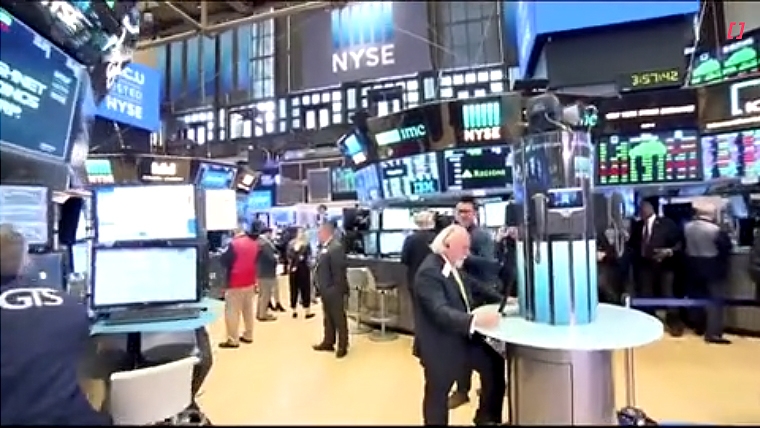
There have been a number of market-moving events overnight, including a call by President Trump and President Xi, an ECB policy update, interpreted as a hawkish cut by the market, and higher than expected US initial jobless claims. The net result is little change in US equities and higher global rates. The USD reversed an earlier loss. The NZD traded at a fresh 2025 high of 0.6080 before falling back to 0.6040.
Presidents Trump and Xi spoke on the phone for 90 minutes and “resulted in a very positive conclusion for both countries…there should no longer be any questions respecting the complexity of rare earth products”, Trump posted on social media, adding that respective teams will be meeting shortly. China’s readout from the call added that Chinese students were welcome to study in the US and that Xi urged Trump to remove “negative” measures that have roiled ties, and the countries should work to reduce misunderstandings. China made no mention of rare earths.
The ECB cut its policy rates by 25bps for an eighth time, taking the deposit rate down to 2.0%, as expected. Inflation projections were lowered slightly, showing core inflation near the 2% target through the period. President Lagarde said that policy was well positioned and said, “I think we are getting to the end of a monetary policy cycle". Bloomberg followed with a sourced report saying that ECB officials envisage pausing the easing cycle at the next meeting in July, adding that some officials see the easing cycle as maybe already finished, while others still back another move.
US initial jobless claims rose 8k last week to 247k, going against market expectations of a small drop. Claims are now at their highest level since October, as is the 4-week moving average, indicative of weaker labour market conditions. Trade figures showed a record plunge in imports contributing to a record plunge in the deficit, to $61.6b in April, as forewarned by last week’s advanced reading for goods. Front-loading of imports in Q1 ahead of new tariffs, fully unwound in April, and will result in a strong net exports contribution to Q2 GDP.
The noted events overnight have resulted in some market volatility. European rates rose and the euro was stronger after the ECB update, with the market seeing reduced scope for further policy easing this year. The market sees a better than even chance of the ECB skipping a rate cut in July and the next easing isn’t now fully priced until October. Germany’s 2-year rate is up 8bps for the day, while the 10-year rate is up 5bps. EUR rose to just under 1.15 before pulling back below 1.1440.
US treasury yields fell to their lowest point overnight after the jobless claims figures were published, with the 10-year rate down to a low of 4.31%, before reversing course, with some spillover from higher European yields and extending after the report of the Trump-Xi call. The rate traded almost as high as 4.4% and is currently up 3bps from the NZ close just under that figure, with the curve slightly flatter.
The combination of the jobless claims report and ECB update drove the USD down to a fresh multi-year low on Bloomberg’s dollar index, before reversing course, supported by the US-China détente. This saw the NZD climb to a fresh 2025 high of 0.6080, before reversing course and it currently sits around 0.6040. The AUD rose to a high of 0.6538 and it currently sits just over 0.65. We note that there have been multiple topside breaches of 0.65 since early May but the AUD has failed to close above the figure on a New York close basis. NZD/AUD had another peek just over 0.93 and has settled back down to 0.9280.
There has been little net change in NZD/EUR or NZD/GBP while the yen has been the weakest of the majors and NZD/JPY has pushed up to 86.8.
US equities have traded both up and down for the day and are currently little changed with an hour left of trading. Of note, President Trump and Elon Musk have been trading barbs – the bromance is well and truly over – and this has been reflected in Tesla’s share price falling over 10%.
In the domestic rates market yesterday, there was strong bidding interest in the 2029 bond on offer at the weekly tender, but less so for the longer-term lines. The NZGB curve steepened, with rates at the short end down 3-4bps, and down 1-2bps at the long end. The 10-year rate closed down 1bp at 4.53%. The swap curve was flatter, with the 2-year rate down 3bps to 3.21%, with the upward move in rates in the aftermath of last week’s RBNZ update continuing to fade, while the 10-year swap rate fell 4bps to 4.06%.
On the economic calendar, the US employment report tonight will be the key focus, with the consensus looking for non-farm payrolls growth of 125k in May, keeping the unemployment rate steady at 4.2%.

We welcome your comments below. If you are not already registered, please register to comment.
Remember we welcome robust, respectful and insightful debate. We don't welcome abusive or defamatory comments and will de-register those repeatedly making such comments. Our current comment policy is here.